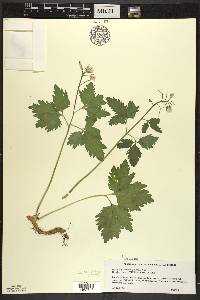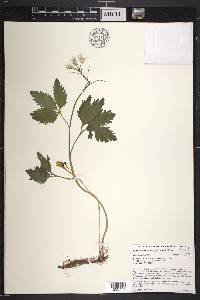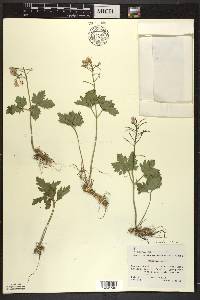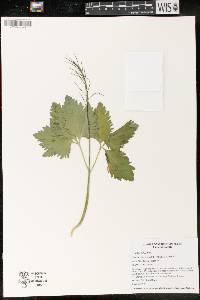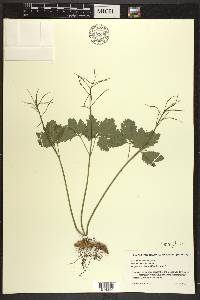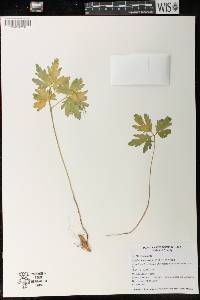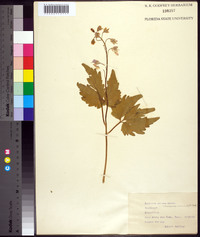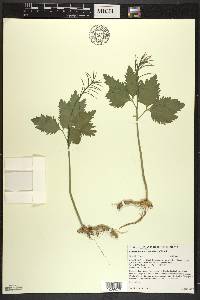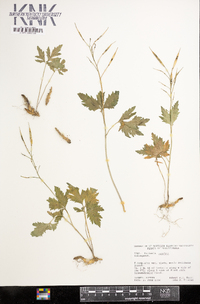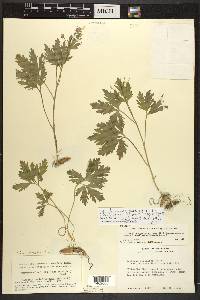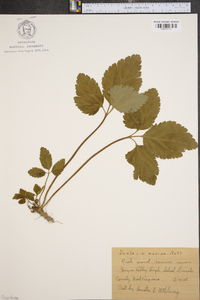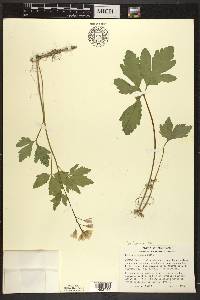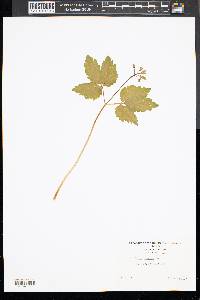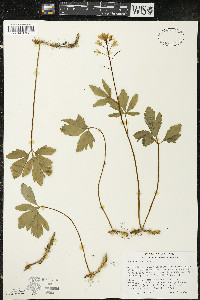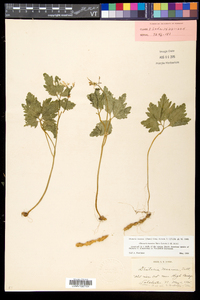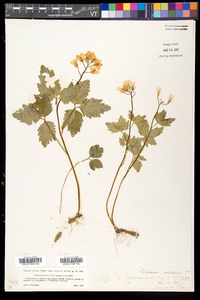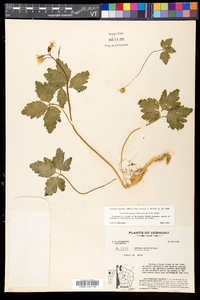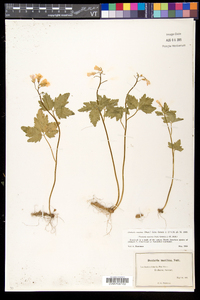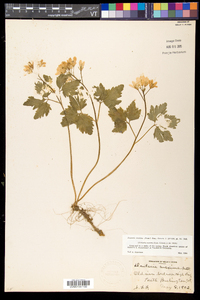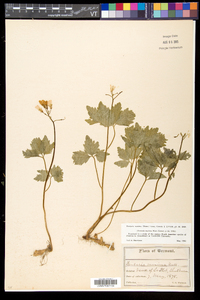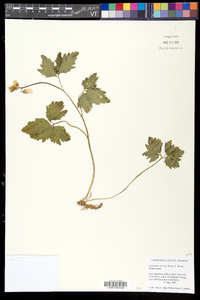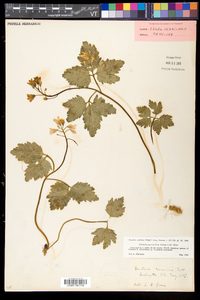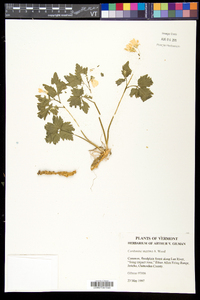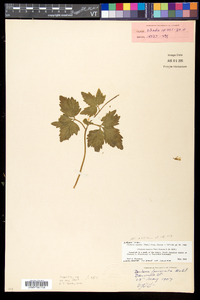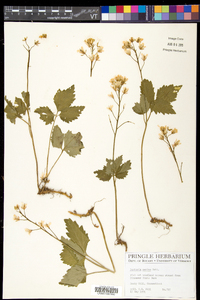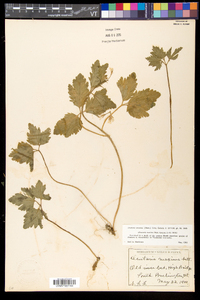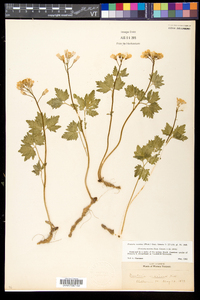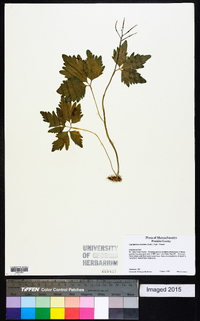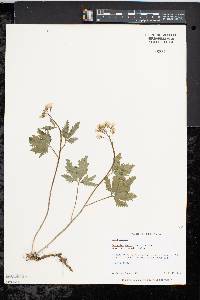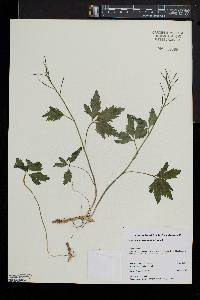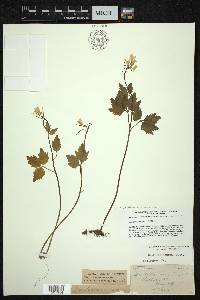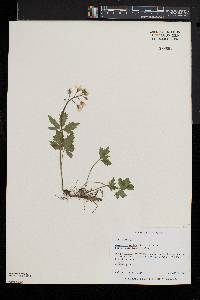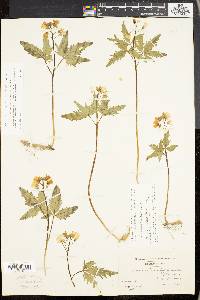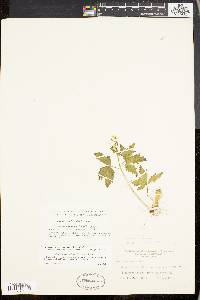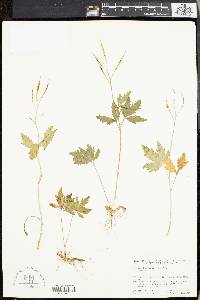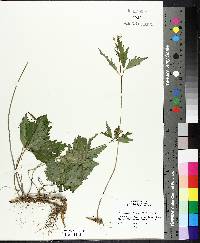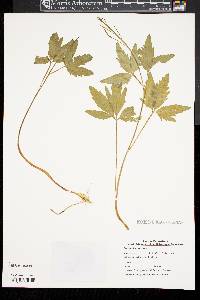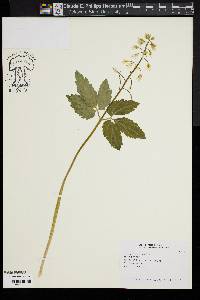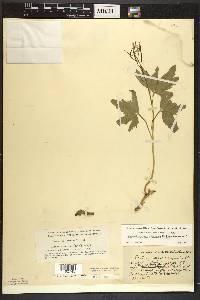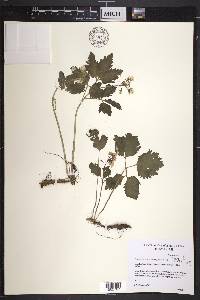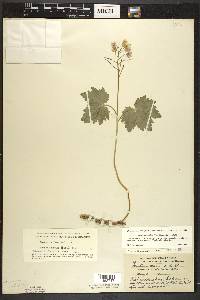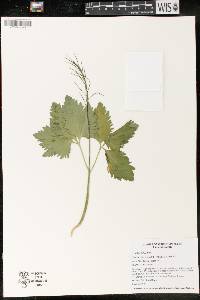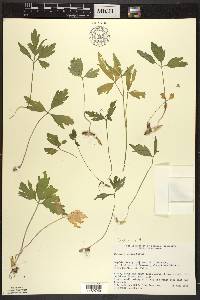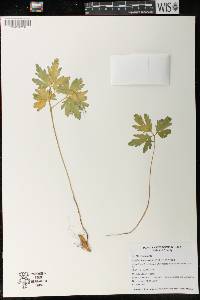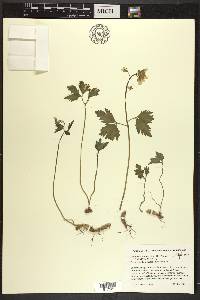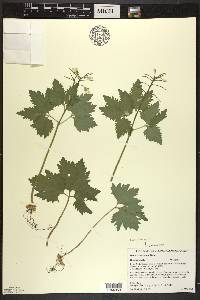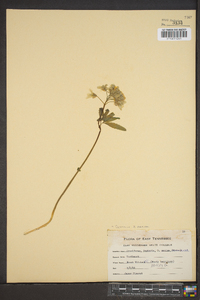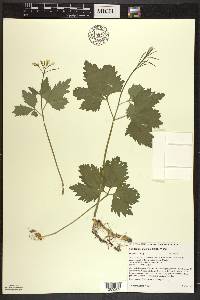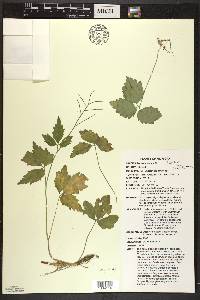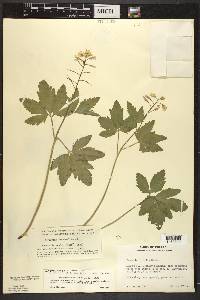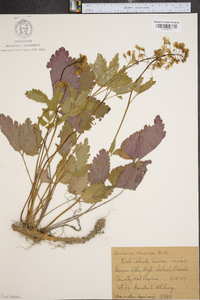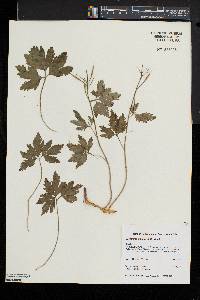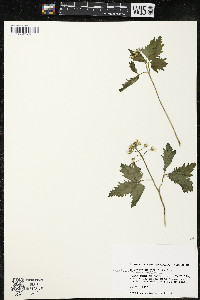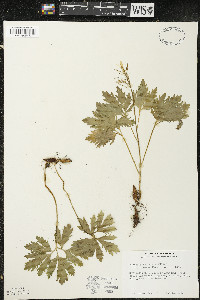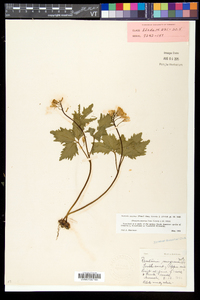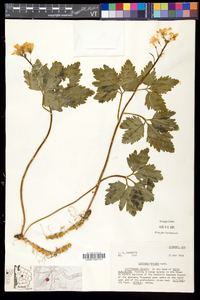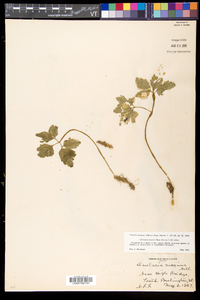Cardamine maxima
|
|
|
|
Family: Brassicaceae
Large Toothwort
[Dentaria anomala Eames] |
Perennials; glabrous (except leaflet margins and, sometimes, rachis). Rhizomes cylindrical, 3-6 mm diam., (distinctly constricted at intervals, non-uniform diam., fleshy, slightly fragile, with dentate leaf scars). Stems erect, unbranched, 0.9-3(-4) dm. Rhizomal leaves 3-foliolate, 7-20 cm, leaflets petiolulate or subsessile; petiole 4-15 cm; lateral leaflets subsessile or petiolulate, blade often similar to terminal, base often oblique; terminal leaflet (petiolule 0.2-1(-1.7) cm), blade broadly ovate to oblong, 2-7.5 cm × 12-37 mm, base cuneate to obtuse, margins coarsely dentate to sharply incised, or deeply cleft into 2 or 3 lobes (lobes dentate or incised, margins puberulent). Cauline leaves 2 or 3, 3-foliolate, (rarely subopposite), petiolate, leaflets petiolulate or subsessile; petiole (0.5-)1-4(-6.5) cm, base not auriculate; lateral and terminal leaflets similar to rhizomal, distalmost sometimes much smaller. Racemes ebracteate. Fruiting pedicels: (flowering ones) horizontal to divaricate or deflexed, 7-20 mm. Flowers: sepals (erect to ascending), oblong, 5-7 × 2-3 mm, lateral pair slightly saccate basally; petals white or pink, oblanceolate, 10-17 × 3-6 mm, (not clawed, apex rounded); filaments: median pairs 4-8 mm, lateral pair 3-6.5 mm; anthers linear, 1.7-2.7 mm. Fruits (undeveloped), linear-lanceolate, to 3 cm × 2 mm; ovules 10-14 per ovary; style 3.5-7 mm. Seeds not known. 2n = 120, 124, 132, 138, 156, 161, ca. 208. Flowering Apr-Jun. Rich woods, shady ravines, ledges, moist alluvial bottoms, steep forested slopes, stream banks; N.B., Ont., Que.; Conn., Maine, Mass., Mich., N.J., N.Y., Ohio, Pa., Vt. Cardamine maxima has not been found with mature fruits and seeds and it has long been suspected to be a hybrid between C. concatenata and C. diphylla. Molecular studies (P. W. Sweeney and R. A. Price 2000) indicate that C. maxima is distinct from both those species. Although we hesitate to maintain it as a species, its wide distribution and morphological distinctness warrant its recognition.
Rhizome with alternately enlarged and slightly constricted regions; stems 1.5-4 dm, glabrous; basal lvs similar to the cauline, usually present at anthesis; cauline lvs typically 3 and distinctly alternate, ternate, the segments petiolulate, lance-ovate to rhombic- ovate, crenate-toothed, the lateral asymmetrical, or with a lateral lobe, or bifid nearly to the base; hairs of the lf-margins spreading, 0.2-0.3 mm; fls and frs much as in no. 1; 2n=208, perhaps other nos. Rich woods; Me. and N.B. to Mich. and Wis., s. to W.Va. and Ky. Apr., May. (Dentaria m.) Said to be a sterile hybrid between nos. 1 [Cardamine diphylla (Michx.) A. W. Wood] and 3 [Cardamine concatenata (Michx.) O. Schwarz]. Gleason, Henry A. & Cronquist, Arthur J. 1991. Manual of vascular plants of northeastern United States and adjacent Canada. lxxv + 910 pp. ©The New York Botanical Garden. All rights reserved. Used by permission. |


